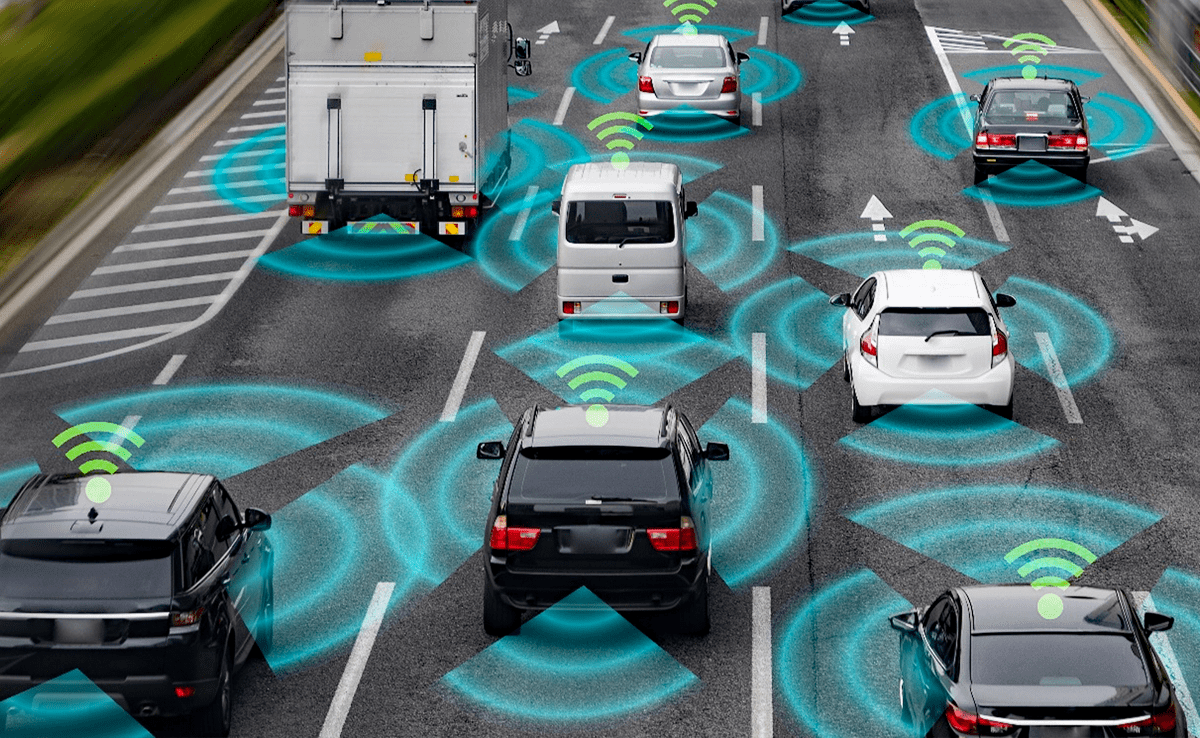A brief explanation of connected-car technology.

“Connected car” has been a part of car industry dialogue for well over a decade now. As technology has advanced, so has this concept. Now, automakers and associated regulatory bodies have adopted the term “V2X” to encompass a wide range of automotive communication options with the purpose of improving safety and overall mobility.
More connected-car news
What is V2X?
Most consumers would likely consider the term “connected car” as a reference to interfacing a smartphone with a vehicle. It started with simple Bluetooth connections for making and receiving phone calls, advancing through integrations with Apple CarPlay and Google Android Auto. Now, with manufacturer-specific applications, smartphones can even replace keyfobs to lock/unlock, enter, and start a vehicle.
V2X


V2X, short for “vehicle-to-everything,” is far broader in scope. According to the U.S. Department of Transportation, V2X “…generally encompasses vehicle-to-vehicle (V2V), vehicle-to-infrastructure (V2I), and vehicle-to-pedestrian (V2P) communications.”
V2V
V2V is self-explanatory: It’s technology that allows vehicles to communicate with each other while on the road. Based on dedicated short-range communications (DSRC), V2V has been around in some form for many years. Vehicles so equipped “talk” to each other in real time and push the data to drivers to alert them of potential road hazards.
V2I
V2I takes V2V a step further by aggregating surrounding infrastructure data, including traffic, weather, signage, etc. Many modern driver-assistance systems include traffic- and speed-limit sign recognition, which then gets relayed to the instrument panel and/or infotainment screen.
V2P
V2P is designed to help keep pedestrians, cyclists, and others safe from accidents. Most new vehicles implement some form of pedestrian detection, which will automatically engage the brakes to avoid such collisions.
While we are starting to see the fruits of this technology, research remains ongoing. We’ll certainly continue to see improvements to safety systems, but there are also plenty of implications for the development of autonomous vehicles. The latter is still very much in its infancy but don’t be surprised to see significant advancements in the coming years.
CG Says
Vehicles are safer and more intelligent thanks to the integration of various V2X technologies. There is great potential for continued safety improvement, but there are also major concerns for how this data is collected and used. The State of Texas recently filed a lawsuit against General Motors, alleging the automaker took private information from 1.5 million residents and sold it to insurance companies without their knowledge or consent. We urge manufacturers to be judicious with their research and regulators to keep a close eye on how these systems are implemented.


Listen to the Car Stuff Podcast
V2X Communication Pictures
Click below for enlarged images
Is Your Car Spying On You?
Consumer Guide Car Stuff Podcast Episode 238: Car of the Year Qualifiers, Jamie Butters on Future Product, Driving the Volvo EX90





